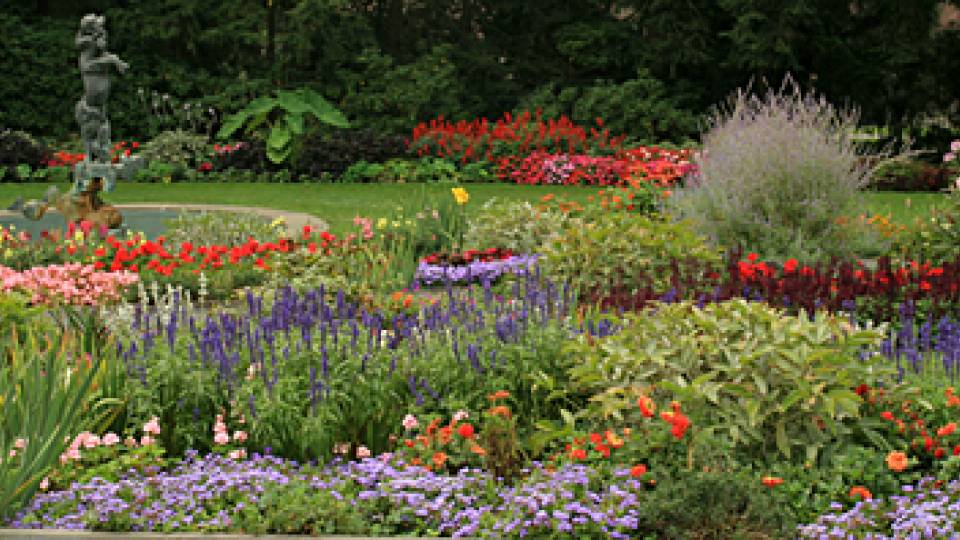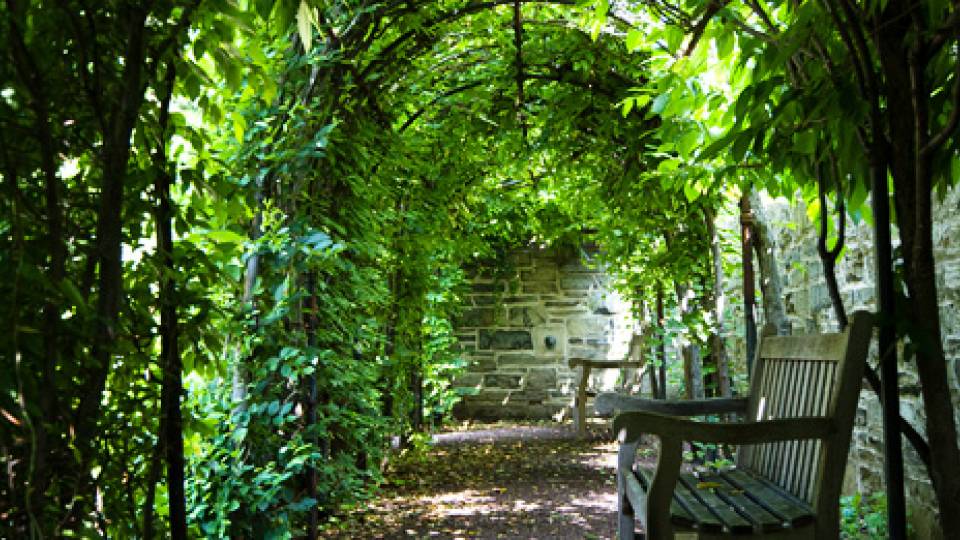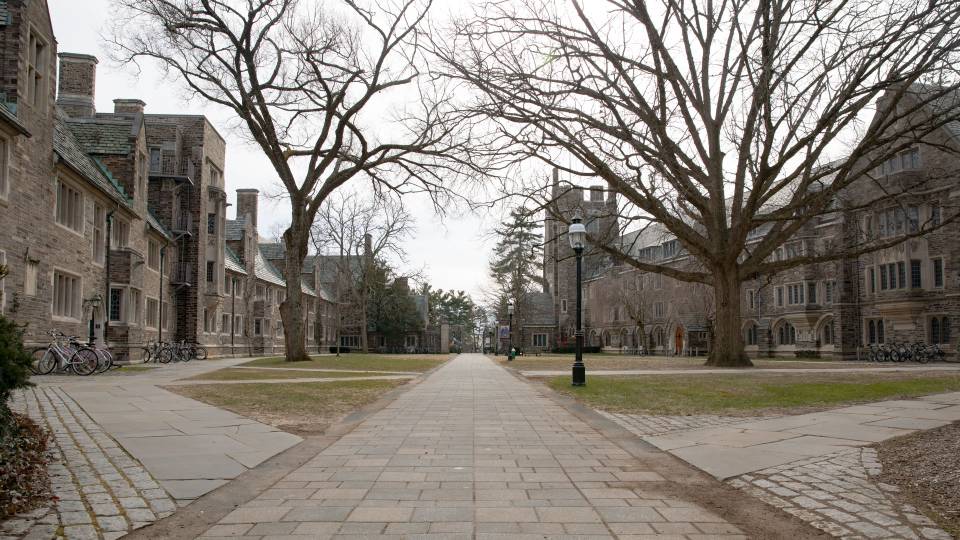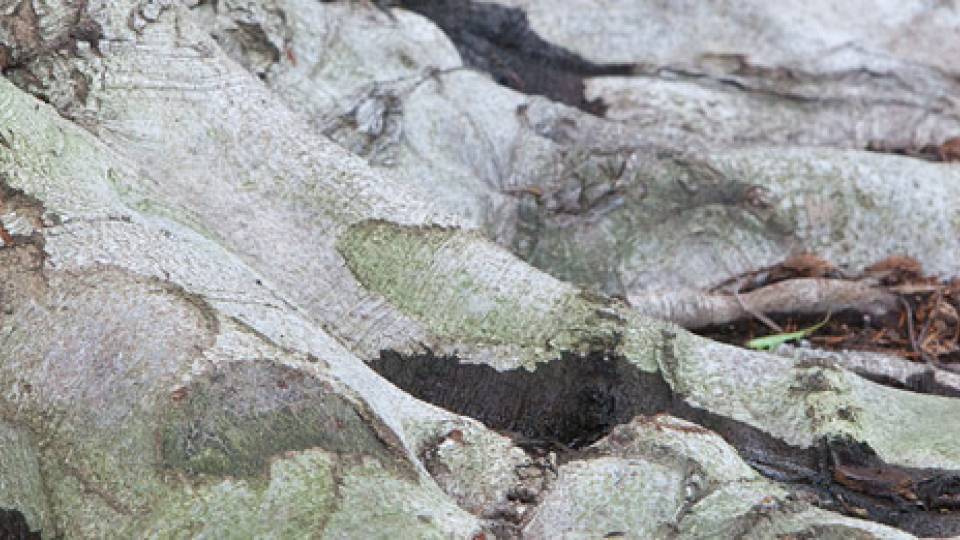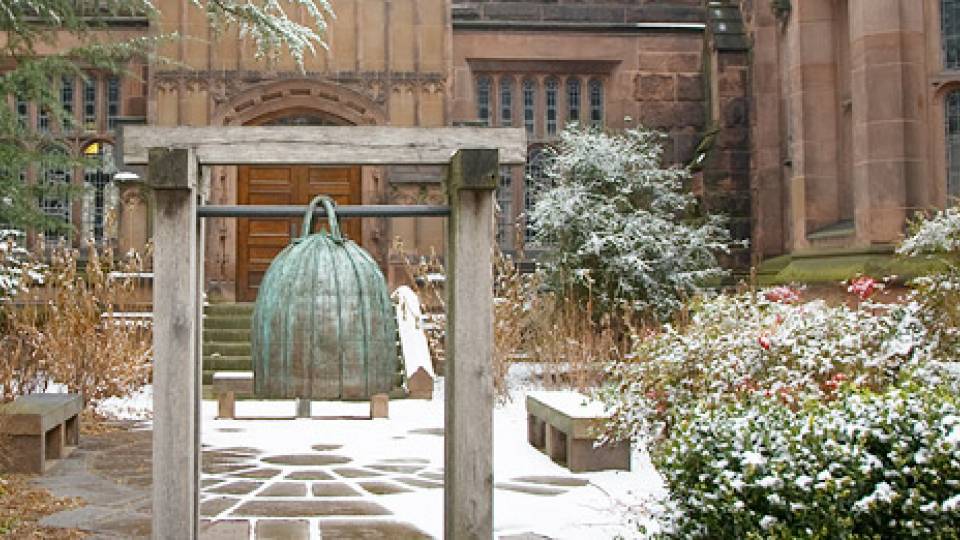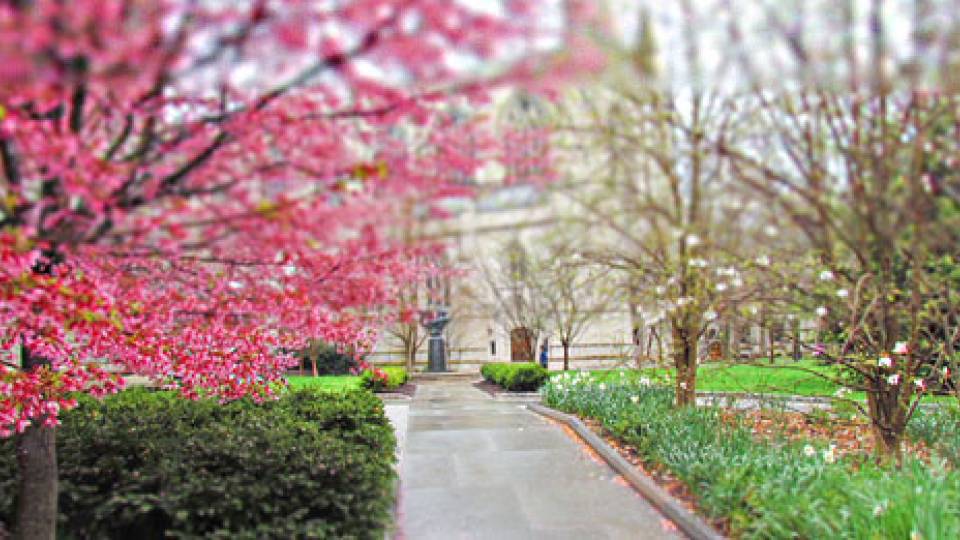Visitors to Princeton University's Prospect Gardens may be familiar with the cheerful orange marigolds, pops of pink petunias and bunches of begonias blooming around the lush grounds. What they may not know is that most flowers planted there and in other campus gardens get their start just down the road in the University's greenhouses.
Princeton is one of a handful of non-agricultural universities to have its own greenhouses and nursery, which are located off main campus behind Windsor and Rickerson fields. The Campus Grounds staff (part of the Facilities Organization) maintains the greenhouses and campus gardens.
"Most of what you see planted on campus originates at the greenhouses," said Devin Livi, assistant director of grounds and landscaping. "I don't think people even know this exists and how much work we do behind the scenes for the gardens on campus."
The video below provides a look inside the greenhouses this spring as annual flowers were blooming before being planted on campus for the summer and fall. About 6,000 annuals were grown this year.
"No one dictates what [flowers and plants] we need to use, so it's a really great environment to be able to try different things," said Grounds Foreman John Wisniewski, who oversees greenhouse operations and the gardens at the Graduate College, Lowrie House, Palmer House, Prospect House and Wyman House.
Wisniewski has worked at the greenhouses for 40 years.
"My favorite part is growing the plants from seed or plugs and then planting them in the gardens and watching people enjoy them throughout the summer," he said. "We have groups that come from all over during the summer to tour the gardens, horticulturalists, and they'll make comments on how we use the different plants. I think it's appreciated."
Between 12 and 14 Campus Grounds staff work at the enclosed greenhouses and outdoor nursery depending on seasonal needs.
"It's a great environment for people who are coming into the University to learn about plants in general," Livi said, adding there are also opportunities for other Facilities staff to volunteer at the facility and learn new horticultural skills such as planting and pruning trees.
The University has its own greenhouses and nursery thanks to Beatrix Farrand, Princeton's first landscape architect. Farrand argued the University could save money, gain new plant varieties and acclimate plants to the New Jersey environment by growing them in-house. The facility started in 1935 with one greenhouse located between what is now Roberts Stadium and Faculty Road, according to Livi.
As greenhouse operations expanded over the years, sustainability also became an important aspect of campus landscaping practices.

The University has its own greenhouses thanks to Beatrix Farrand, Princeton's first landscape architect. Farrand argued the University could save money, gain new plant varieties and acclimate plants to the local climate by growing them in-house. (Photo by Christopher Lillja, Facilities Organization)
"We're using native trees and shrubs when possible," Livi said. "And we've changed Prospect Gardens a bit throughout history," noting that there used to be more annual plantings, and now more perennial plants are in place. There is also less need for watering and maintenance. "So really the history of the garden has kind of come along with the history of campus, where we're trying to do things more sustainably than we once did," Livi said.
The University also recycles about 98 percent of vegetative products (for example, fallen leaves and trees or excavated soils) to make mulch, compost and soil used in the gardens and other landscaping projects. The materials are stored at a compost and mulch yard near the greenhouses.
"It allows us to keep everything on campus," said Robert Staudt, grounds planner. "We are recycling everything and we don't need to purchase topsoil or mulch. It's a cost savings and energy savings and it's sustainable."

Grounds Planner Robert Staudt stands in front of the University's compost and mulch yard. The University recycles about 98 percent of vegetative products, such as fallen leaves, to make mulch, compost and soil used in campus gardens. (Photo by Christopher Lillja, Facilities Organization)
Back in the gardens, sustainability is also considered when the University mixes traditional favorites like spring tulips and summer impatiens with new varieties.
"Historically we use certain plantings that we like and know will do well, but we also try different varieties that may come online," Livi said.
Lantanas and scaevolas are two examples. While not native to this region, each flower does well in hot and dry conditions.
"It saves us so much by not having to water all the time and the beauty we get all summer," Wisniewski said. "Every year we try a few different varieties of plants just to see what does well at Princeton."

Pink dahlias (dahlia hybrida) are one type of annual flower planted in Prospect Gardens. (Video still from Danielle Alio, Office of Communications)

African daisies (osteospermum speciosa) can be seen on campus at Prospect Gardens, Maclean House and the Elm Drive guard booth. (Video still from Danielle Alio, Office of Communications)

Orange marigolds (tagetes erecta) can be seen on campus in Prospect Gardens and at the circle in front of Prospect House, and also are planted near some athletic fields. (Video still from Danielle Alio, Office of Communications)

Lantanas (lantana camera) are an annual flower planted in Prospect Gardens and the Wyman House garden. Wisniewski says they are a carefree plant because they like the sun, do not need much water and will bloom in Princeton through the summer and fall. (Video still from Danielle Alio, Office of Communications)

